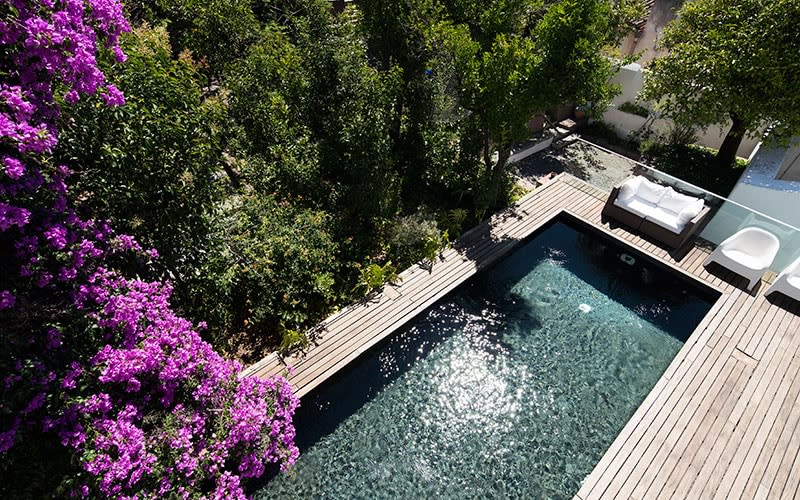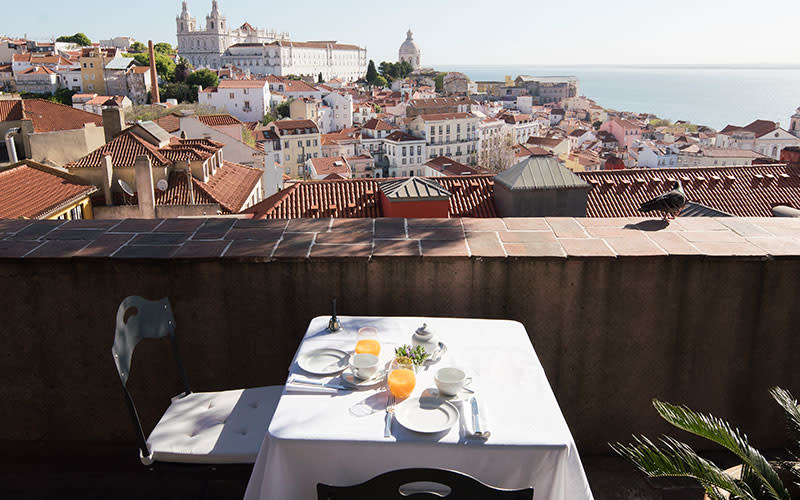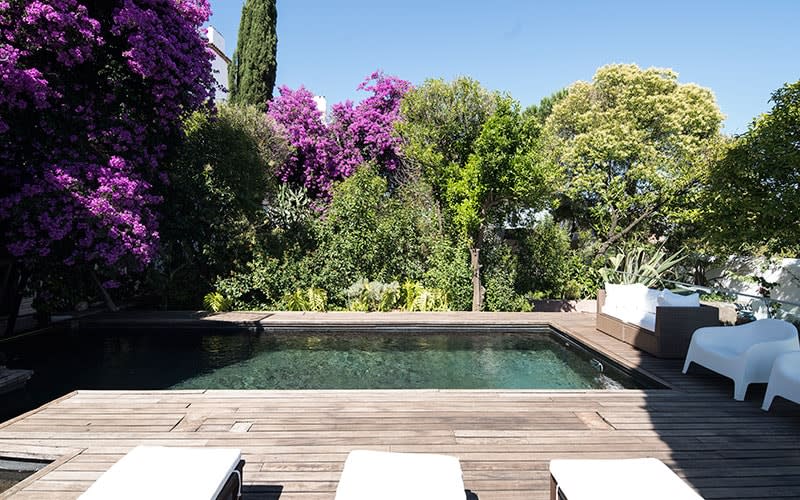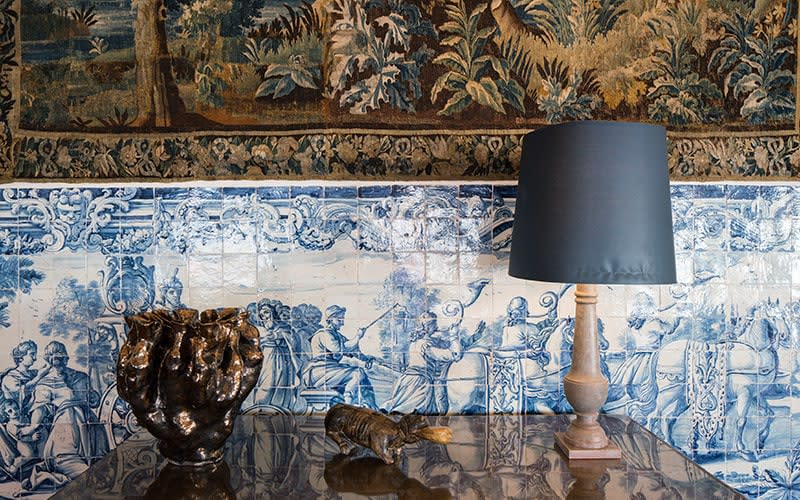Inside the Lisbon hotel that offers a magical adventure for the soul

I have walked past the red door so many times. Hiking up to the Castelo de Sao Jorge, which sits imperiously on the highest of Lisbon’s seven hills, I have taken a selfie near the art installation on the wall just to the side of it and have flopped down for a cold beer at the café in the courtyard in front of it. But I have never really noticed the red door.
More fool me. Welcome to Palacio Belmonte, a crown jewel hidden among Lisbon’s plentiful gems. A feast for the eyes and adventure for the soul – something that, in today’s age of travel corridors, is more necessary than ever. Behind this red door isn’t just a hotel; here is a labour of love from an owner who wanted to conjure up a magical city hideaway for those looking for something a little more than just a luxurious place to stay.
Once a noble family home dating back to the 15th century, this former residence of the Earl of Belmonte is attached to the castle through a network of secret passageways and hidden rooms. The minute you enter, you feel the frisson of clandestine scandal. Actor Jeremy Irons names Palacio Belmonte as his favourite hotel in the world, describing staying here as “like living in the middle of a favourite book you are reading. You escape into it and never want it to end.”

Wim Wenders chose to film his Lisbon Story here and Christian Louboutin was such a regular visitor he went on to buy his own place around the corner. A-listers regularly rent out the entire palace for parties and banquets and you can easily imagine them partying the night away in the grand Maria Ursula ballroom, peeking over the walls of the beautiful Mediterranean garden at the city glittering below them. The mind boggles at who may have taken a midnight dip in the outside black-marble saltwater pool.
“I wanted this house to be a place for history, passion, soul, warmth and individuality”, says owner Frederic Coustols, the French property developer described variously as conservationist, polymath and romantic.
Coustols bought the abandoned palace in 1994, originally to make it his home. In total disrepair, with water tumbling through its ceilings, he had his work cut out. Having restored a township in Gascony, and whole villages in India and China, he was well equipped for the challenge. Over six years, his carefully chosen team of expert artisans and craftsmen put together the palace’s broken bones. They unearthed a chest full of letters from the king and queen of Portugal and floors that were paved with the same 300-year-old Latvian fern wood the earl originally traded for wine.
Shattered and scattered, more than 3,000 hand-painted azulejos (blue and white tiles) were discovered, which then, like a historic jigsaw puzzle, were put together and are now displayed over 59 wall panels.

Slowly, the beating heart of this palace was pumped back to life, but Coustols was left with a dilemma. He had created something very special, so was it really fair to leave it to gather the dust he’d spent so long removing when he wasn’t there? Or, should he open it up to guests and, if he did, would he undo the careful renovation work by installing air-conditioning, power showers and hanging widescreen TVs on to his beautifully restored walls. Coustols decided there was a third way.
The result would be a part-time home for him and his wife and a unique hotel, where rooms would be as sustainable as they would be luxurious. No cramming in as many beds as possible; just 10 suites would be created out of the space in which its entirety tots up to an incredible 3,700 sq m. Instead of air-con, the thick palace walls and stone floors keep rooms cool and marble plunge baths with Acqua di Parma goodies and natural herbs from the palace’s garden tied in a velvet sack, would more than make up for the mundanity of just another power shower.
You won’t find chocolates on your pillow or a TV with hundreds of channels, but you will have a room overlooking the spires and ancient rooftops of Alfama and the shimmering majesty of the Tagus river beyond.

• The best hotels in Lisbon city centre
Each suite is named after a Portuguese cultural icon. We stayed in the Bartolomeu de Gusmao – a seventh-century Moorish tower fit for Rapunzel, styled into a suite over three levels. The bells from the church of Saint Vincent on the next hill provided a natural wake-up call.
Taking a breakfast of pancakes and ham and cheese on the suite’s vast terrace overlooking Lisbon was captivating. Later, we made ourselves a sundowner from the honesty bar and watched as shadows crawled across the city, which then burst into what looked like a display of a million fairy lights just for our pleasure. TV? Pah.
The benefit of having such a huge space open to so few guests (other than the obvious advantages during the Covid outbreak) is that when you stay here it feels like you have the whole palace to yourselves – the music room, the chapel, the library which is stocked with more than 4,000 books, where the walls are lined with panels listing a word from each language of the world (a work from the owner’s artist sister, originally made for the former French president François Mitterrand).
If you are looking for five-star glitz, bell boys and showiness, this palace is not for you. However, if you are seeking romance, charm and enchantment – and who isn’t at the moment? – I can think of few places better.
It is a beautiful calm corner to escape from an increasingly scary world. Staying here is a real balm for the soul. All you have to do is walk through the red door. I so wish I had done it sooner.
Suites start at €500 (£450), with a €100 supplement added on for special holidays (Easter, Valentine’s Day, etc). A stay in the Bartolomeu de Gusmao suite costs €1200. For more information, see palaciobelmonte.com.
Read the full review: Palacio Belmonte

